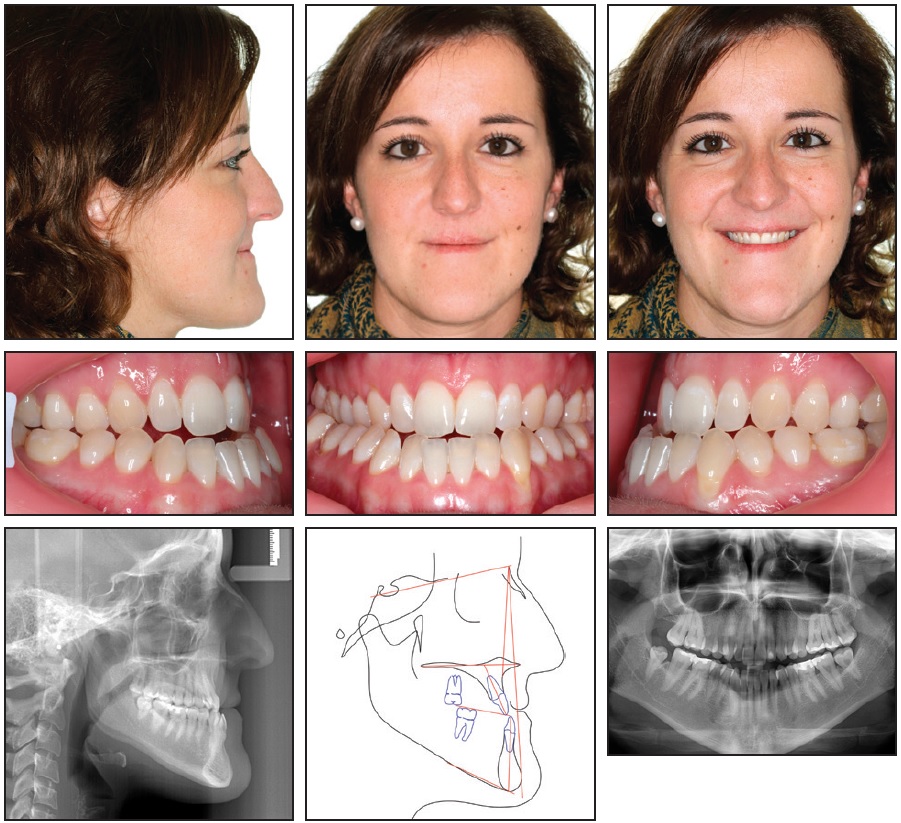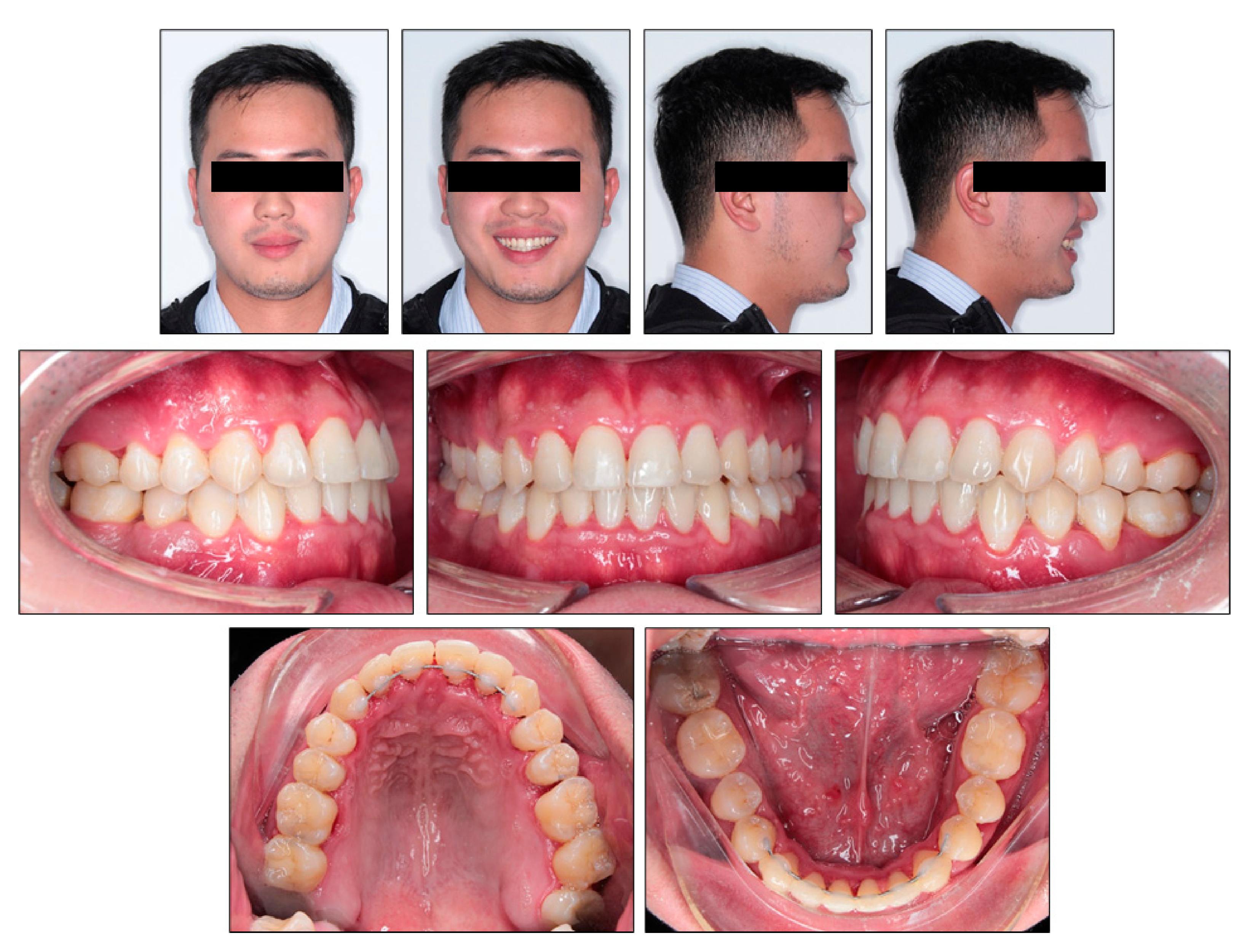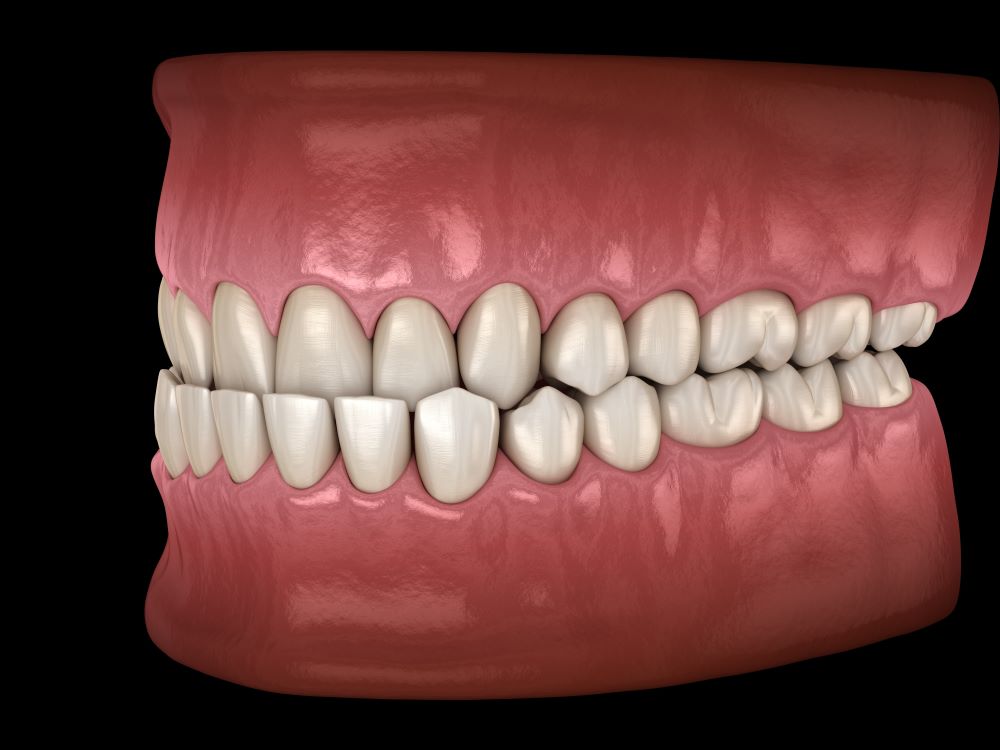class iii malocclusion treatment options
Dental malocclusions are classified based on the positioning of the upper and lower molars. This type of early intervention has been indicated more frequently in order to eliminate primary etiological factors.

Nonsurgical Treatment Of An Adult With A Skeletal Class Iii Malocclusion Combined With A Functional Anterior Shift Severely Overclosed Vertical Dimension And A Reverse Smile American Journal Of Orthodontics And Dentofacial
People with this underbite often have a chin that appears too pronounced.

. Pseudo-Class III malocclusion is characterized by the presence of an anterior crossbite due to a forward functional displacement of the mandible. The classes are based on your bite and whether your upper or lower teeth are misaligned. And 3 orthodontic appliances namely removable maxillary.
Class 3 is the rarest type of malocclusion. The National Health and Nutrition Examination Survey reveals that a large percentage of the population has a malocclusionThat means that many people in the world have ill-positioned teeth. The bite is normal but the upper teeth slightly overlap the lower teeth.
An orthodontic evaluation revealed the patient had a skeletal class III malocclusion with bilateral posterior crossbites extending anteriorly to. If left untreated a person can. Different Treatment Options for a Class 3 Malocclusion.
2 orthopedic appliances such as chin cap and face mask. There are three classes of malocclusion. Moreover the early treatment may help these children to avoid psychological problems increasing their self-confidence and self-esteem and at the same time the worsening.
What causes a Class III malocclusion. However the reality is that having an underbite can make it hard to chew properly. Growth modification dentoalveolar compensation orthodontic camouflage and orthognathic surgery.
6 The efficacy of early treatment is dependent on numerous patient factors such as the presence of a retrognathic and vertically deficient maxilla. However when a child shows a dentoskeletal Class III malocclusion very often the parents require an orthodontic treatment to improve both the occlusion and the esthetics. Hindawis Academic Journals Cover A Wide Range of Disciplines.
1 functional appliances such as reverse twin block Frankel appliance and the removable mandibular retractor. Class 1 malocclusion is the most common. Various treatment options available for the management of developing Class III malocclusion are as follows.
Various types of appliances have been described in the literature for the early. The estimated incidence of Class III malocclusion among the Korean Japanese and Chinese is 4 to 14 because of the large percentage. Thus over time this causes strain and damage to the teeth and jaw muscles.
The patient had a class III molar relationship with no overjet and no overbite. Contrary to class 2 class 3 malocclusions are characterized by lower molars that are too far forward compared to the upper molars. It is very difficult to diagnose and treat Class III malocclusion.
In most cases the maxillary incisors present some degree of retroclination and the mandibular incisors are proclined. Journal of Pharmacy and Bioallied Sciences. Class 3 Malocclusion Treatment Options.
This outdated dogma has now. Some people may see a class 3 malocclusion as a cosmetic issue that does not require treatment. The treatment of Angle Class III malocclusion is rather challenging because the patients growth pattern determines the success of long-term treatment.
In Class III malocclusion originating from mandibular prognathism orthodontic treatment in growing patients is not a good choice and in most cases orthognathic. There was a 2mm maxillary midline deviation to the right. Treatment Options for Class III Malocclusion in Growing Patients with Emphasis on Maxillary Protraction.
In the developing Class III malocclusion early intervention using two-phase treatment is often supported with greater orthopedic effect in younger patients aged between seven to nine years old. It is commonly believed that successful camouflage treatment for class III malocclusion can be achieved by proclination of maxillary incisors retrusion of mandibular. Ad Veterinary Medicine International Invites Papers on All Areas of Veterinary Research.
Early diagnosis and treatment are still highly discussed issues in orthodontic literature. Malocclusion is the term for a skewed relationship between the positioning of the teeth with the jaw closed. Class III malocclusion is a less frequently observed clinical problem than Class II or Class I malocclusion occurring in less than 5 of the US.
An Invisible Approach to Correct Mild Skeletal Class III Malocclusion. Early treatment with facemask and late treatment with surgery have previously been the most popular options however we should only decide on treatment modality after contemplation of the causes. This type of malocclusion involves a number of cranial base and maxillary and mandibular skeletal and dental compensation components.
Population56 The prevalence is greater in Asian populations. Class 2 malocclusion called retrognathism or overbite occurs when the upper jaw and teeth severely. We all previously believed that Class III was completely or at least mainly genetic.
There are three main treatment options for skeletal class III malocclusion.

Non Surgical Compensation Of Skeletal Class Iii Malocclusions Oral Health Group

Ijerph Free Full Text Skeletal Class Iii Malocclusion With Lateral Open Bite And Facial Asymmetry Treated With Asymmetric Lower Molar Extraction And Lingual Appliance A Case Report Html

Non Surgical Compensation Of Skeletal Class Iii Malocclusions Oral Health Group

What Is A Class 3 Malocclusion Dental Information

14 Class Iii Correctors Pocket Dentistry

Nonsurgical Correction Of Severe Skeletal Class Iii Malocclusion Jco Online Journal Of Clinical Orthodontics

Nonsurgical Correction Of Severe Skeletal Class Iii Malocclusion Jco Online Journal Of Clinical Orthodontics

Ijerph Free Full Text Skeletal Class Iii Malocclusion With Lateral Open Bite And Facial Asymmetry Treated With Asymmetric Lower Molar Extraction And Lingual Appliance A Case Report Html

Management Of A 12 Year Old Male With A Class Iii Malocclusion And Canine Impaction Oral Health Group

Ijerph Free Full Text Skeletal Class Iii Malocclusion With Lateral Open Bite And Facial Asymmetry Treated With Asymmetric Lower Molar Extraction And Lingual Appliance A Case Report Html

Nonsurgical Correction Of Severe Skeletal Class Iii Malocclusion Jco Online Journal Of Clinical Orthodontics

Surgery First Approach In Correcting Skeletal Class Iii Malocclusion With Mandibular Asymmetry American Journal Of Orthodontics And Dentofacial Orthopedics
When The Class Iii Patient Says No Orthodontic Products

Non Surgical Compensation Of Skeletal Class Iii Malocclusions Oral Health Group

Clinical Analysis Correcting Class Iii Malocclusions With Interceptive Orthodontic Treatment

Multidisciplinary Treatment With A Customized Lingual Appliance For An Adult Patient With Severe Class Iii Malocclusion And Multiple Missing Teeth American Journal Of Orthodontics And Dentofacial Orthopedics

Class Iii Treatment Photos Orthodontics Cary Nc Clayton Nc

